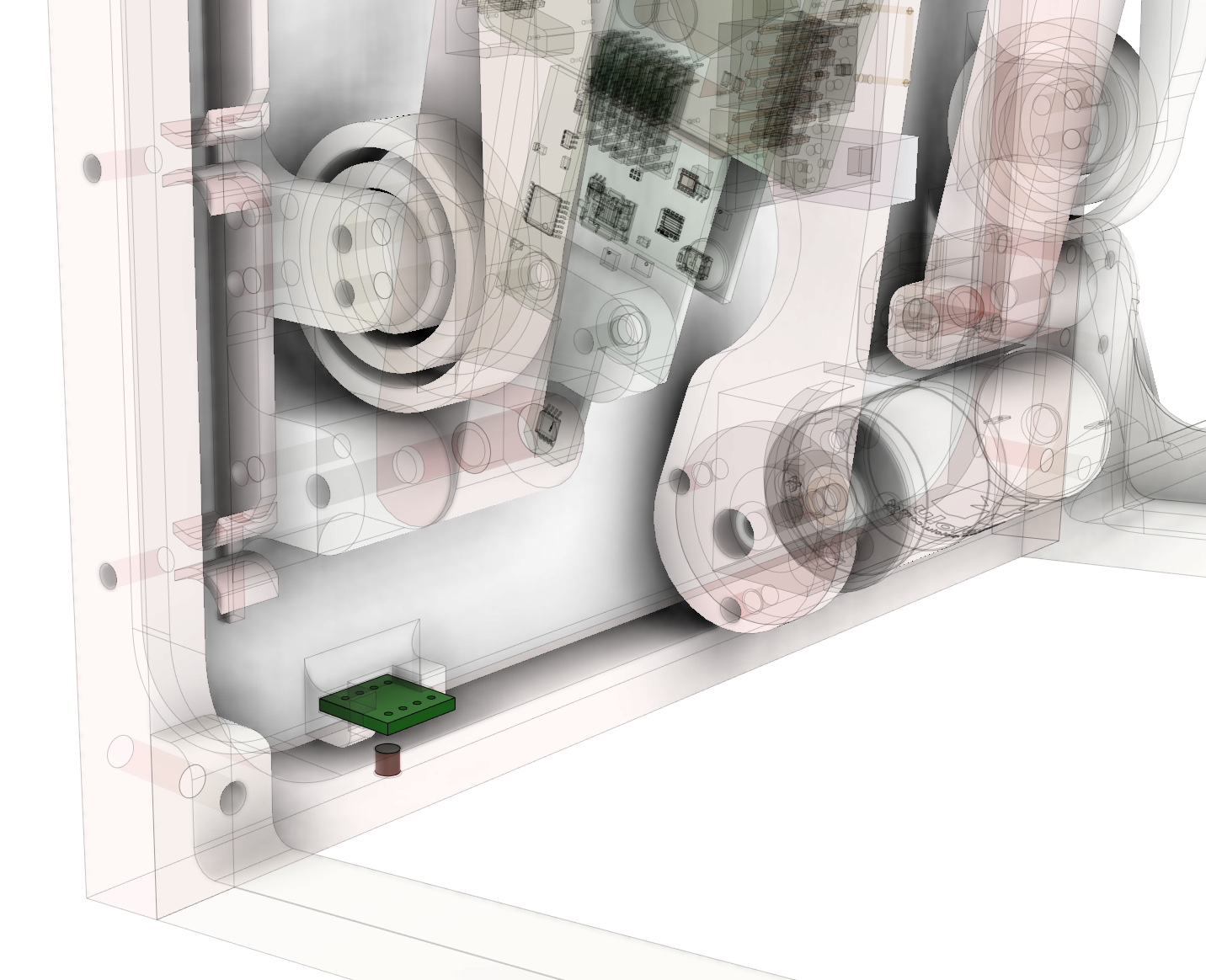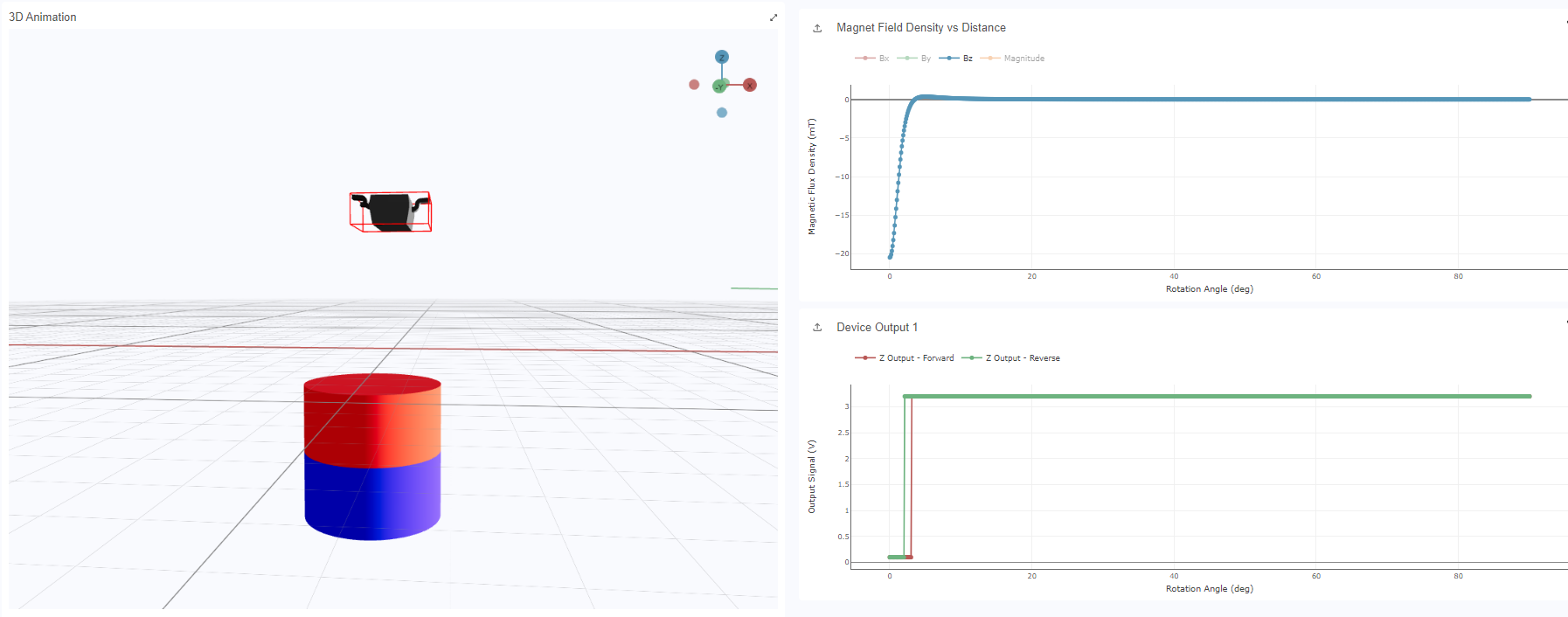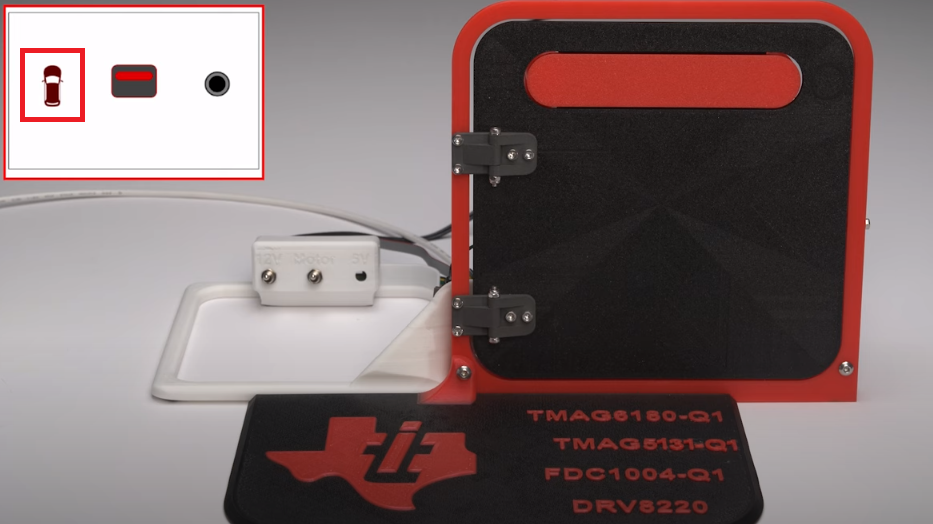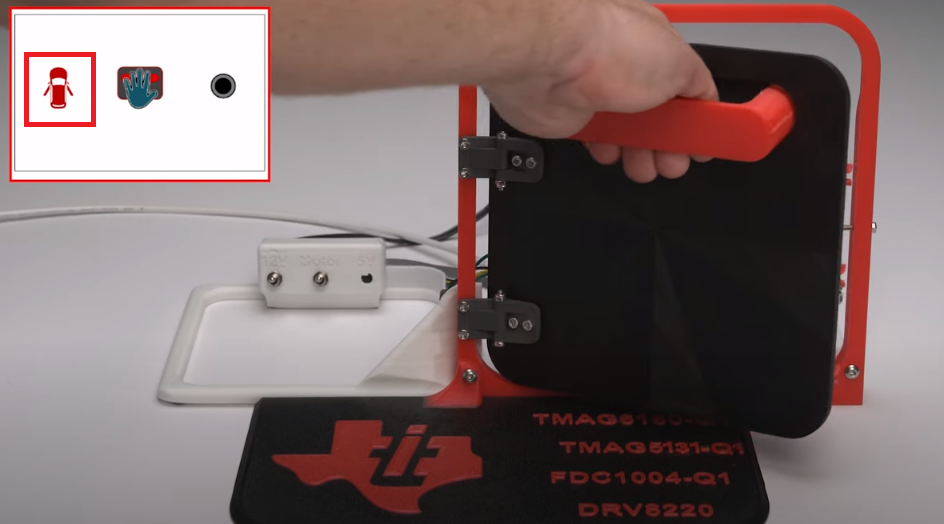SNOAAA5 April 2024 DRV8220 , FDC1004-Q1 , LDC3114-Q1 , TMAG5131-Q1 , TMAG5173-Q1 , TMAG6180-Q1
- 1
- Abstract
- Trademarks
- 1Introduction
- 2Automotive Door Handle Architectures
- 3Functional Demo Design
- 4Detailed Design Flow for Door Handle Functions
- 5Summary
- 6References
4.1.1 Demo Implementation of Open Close Detection Using TMAG5131-Q1
In this demo, a TMAG5131-Q1 automotive Hall-effect switch senses when the door is open or closed. The TMAG5131-Q1 is located on the bottom of the door as shown in Figure 4-3. TMAG5131-Q1 senses the magnetic field from a small magnet embedded in the door frame. The specific device variant is the TMAG5131C1D, which has a sampling frequency of 20Hz, triggers at BOP typical of ±3.0mT, releases at BRP typical of ±1.5mT, and has 1.5mT hysteresis. The digital output from this device goes to an input pin on the TI-SCB.
 Figure 4-3 TMAG5131-Q1 Placement and Magnet Embedded in Door Frame
Figure 4-3 TMAG5131-Q1 Placement and Magnet Embedded in Door FrameThe TMAG5131-Q1 is centered above the magnet, with a 4.08mm airgap between the top of the sensor package and the surface of the magnet. The magnet and sensor are each around 140mm away from the hinge origin. The magnet has a height of 3.08mm and radius of 1.59mm.
Figure 4-4 shows the simulation result from TI Magnetic Sense Simulator (TIMSS) for these magnet and sensor locations over a 90 degree rotation from closed to open. The simulation is configured to consider the TMAG5131-Q1 BOP max and BRP min, which helps to identify the worst case for when the device can change states. The results show that the TMAG5131-Q1 output releases after 3 degrees of rotation as the door is opened. As the door is closed, the TMAG5131-Q1 output activates at 2 degrees. These magnetic transitions are within the spatial bounds of the door in the closed position and open position, which is considered to be 90 degrees in this case. A transition region between 2 to 3 degrees helps ensure the TMAG5131-Q1 releases even if the door is only opened slightly, and that the TMAG5131-Q1 only activates again when returned to the closed position.
 Figure 4-4 TMAG5131-Q1 Door Open or Closed TIMSS Simulation Results
Figure 4-4 TMAG5131-Q1 Door Open or Closed TIMSS Simulation ResultsIn the GUI for this demo, a GPIO on the TI-SCB monitors the output of the TMAG5131-Q1 to determine whether the door is open or closed and displays the current state using the door indicator. In Figure 4-5 and Figure 4-6, you can see the door indicator is closed when the door is closed, and illuminates when the door is opened. The full operation of the door open or closed detection in the demo is shown in this video.
 Figure 4-5 Door Closed Indicator
Figure 4-5 Door Closed Indicator Figure 4-6 Door Open Indicator
Figure 4-6 Door Open Indicator